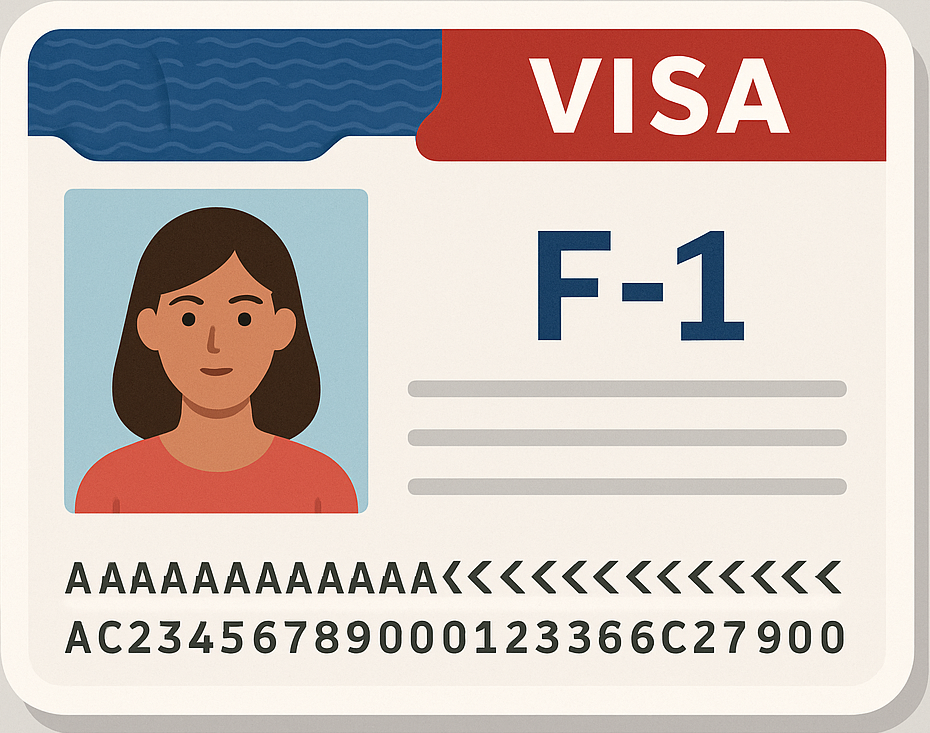How to Get a Student Visa (F-1) for the U.S.
By Arif Law Offices, P.C.
Studying in the United States opens the door to world-class education, diverse cultural experiences, and global career opportunities. If you’re an international student planning to study full-time in the U.S., obtaining an F-1 student visa is the key to making your academic journey possible. At Arif Law Offices, P.C., we help students from around the world successfully navigate the U.S. immigration system. This guide breaks down everything you need to know about getting your F-1 visa in 2025.

What Is an F-1 Student Visa?
The F-1 visa is a non-immigrant visa that allows foreign students to enter the United States to attend an accredited college, university, high school, language training program, or other academic institution. This visa is strictly for full-time students, and it comes with certain restrictions regarding work and program completion.
Step-by-Step: How to Get an F-1 Visa
1. Get Accepted to a SEVP-Certified School
Before applying for the F-1 visa, you must first be accepted to a school approved by the Student and Exchange Visitor Program (SEVP). Once accepted, the school will issue you a Form I-20, a critical document for your visa application.
2. Pay the SEVIS Fee
After receiving the Form I-20, you must pay the SEVIS I-901 fee (currently $350 for F-1 students). Keep your receipt as you’ll need it for your visa interview.
3. Complete the DS-160 Visa Application
Next, fill out Form DS-160, the online application for a nonimmigrant visa. Be sure to print the confirmation page with the barcode.
4. Schedule a Visa Interview
Book an appointment at the U.S. Embassy or Consulate in your home country. Wait times vary, so schedule early—especially during peak seasons.
5. Gather Required Documents
Bring the following to your visa interview:
- Valid passport
- DS-160 confirmation page
- Form I-20
- SEVIS fee receipt
- Financial documents proving you can cover tuition and living expenses
- Academic transcripts, test scores (TOEFL, IELTS, SAT, etc.)
- Visa fee payment receipt
6. Attend the Visa Interview
Be prepared to discuss:
- Why you chose your school
- Your academic and career goals
- Your financial situation
- Your intent to return to your home country after graduation
Confidence, honesty, and clear answers can help increase your chances of approval.
7. Visa Approval and Travel
If approved, your passport will be returned with the F-1 visa stamp. You may enter the U.S. up to 30 days before your program start date listed on the I-20.
Can F-1 Students Work in the U.S.?
Yes, but with restrictions:
- On-Campus Employment: Up to 20 hours per week during the academic year.
- CPT (Curricular Practical Training): Work related to your field of study during your program.
- OPT (Optional Practical Training): Up to 12 months of work authorization after graduation (with a STEM OPT extension for eligible degrees).
Need Help With Your F-1 Visa Application?
Navigating the student visa process can be complex—especially with evolving immigration rules. At Arif Law Offices, P.C., our team specializes in U.S. and French immigration law and provides tailored legal support to ensure your F-1 visa application is successful and stress-free.
Whether you’re applying for the first time, facing a visa denial, or need help with OPT or changing status, contact us today for a personalized consultation.
Keywords: how to get a student visa for the U.S., F-1 visa application process, U.S. student visa requirements 2025, SEVP certified schools list, F-1 visa interview questions, how long does F-1 visa take, SEVIS fee payment, work on F-1 visa in USA, OPT and CPT for F-1 students, immigration lawyer for student visa, U.S. and French immigration attorney, study in the USA for international students, Arif Law Offices P.C.